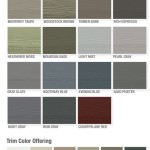Paint Colors for Small Rooms with Limited Natural Light
Small rooms lacking natural light present unique decorating challenges. The absence of sunlight can make these spaces feel cramped, dark, and uninviting. However, selecting the appropriate paint color can significantly impact the room's perceived size and brightness. This article explores effective paint color strategies for transforming small, poorly lit rooms into more spacious and welcoming environments.
The primary goal when choosing a paint color for a small room with limited natural light is to maximize the existing light, however minimal it may be, and create an illusion of spaciousness. Certain colors possess reflective qualities that bounce light around the room, making it feel brighter and larger. Conversely, poorly chosen colors can absorb light, exacerbating the room's dimness and shrinking its perceived size.
Optimizing Light Reflection with Light Colors
Light colors are generally the most effective choice for maximizing light in a small, dark room. These colors reflect more light than their darker counterparts, brightening the space and creating a sense of openness. However, selecting the right shade of light color is crucial. Stark white, while highly reflective, can sometimes feel sterile and cold, especially in rooms lacking natural warmth. Instead, consider softer variations of white, such as off-white, cream, or ivory. These shades offer similar light-reflecting properties without the harshness of pure white.
Off-whites often contain subtle undertones that can influence the room's overall feel. Warmer off-whites, with hints of yellow or beige, can create a cozy and inviting atmosphere, while cooler off-whites, with hints of gray or blue, can evoke a more serene and modern aesthetic. Consider the existing furniture and décor when selecting the appropriate undertone to ensure a cohesive and harmonious design.
Beyond whites, other light colors such as pale blues, greens, and yellows can also work well in small, dark rooms. These colors bring a touch of vibrancy and personality to the space while still maintaining a high level of light reflection. When using colored paint, opt for pastel or muted versions to avoid overwhelming the room. A soft, muted blue, for example, can create a calming and airy atmosphere, while a pale yellow can infuse the room with a sense of sunshine and cheerfulness.
It is also important to consider the sheen of the paint. Higher sheen levels, such as semi-gloss or gloss, reflect more light than matte finishes. However, high-gloss finishes can also highlight imperfections on the walls. A satin or eggshell finish offers a good balance between light reflection and hiding imperfections, making it a suitable choice for most small rooms.
Utilizing Strategic Color Placement
Beyond selecting the right color, strategic color placement can also significantly impact the perceived size and brightness of a small room with limited natural light. The goal is to create visual interest and depth without overwhelming the space.
One effective technique is to paint the ceiling a lighter shade than the walls. This technique draws the eye upward, creating the illusion of a higher ceiling. A white or off-white ceiling is a classic choice, but a very pale tint of the wall color can also work well. The difference in hue should be subtle to avoid a jarring contrast. This approach works especially well in rooms with low ceilings.
Another strategy is to use accent walls to add depth and visual interest. An accent wall is a single wall painted a different color than the other walls in the room. In a small, dark room, it is generally best to use a lighter color for the accent wall than for the other walls. This will ensure that the accent wall enhances, rather than detracts from, the room's overall brightness. The accent wall can be used to highlight an architectural feature, such as a fireplace or window, or simply to add a pop of color to the space.
Consider painting architectural details, such as trim, molding, and doors, in a lighter color than the walls. This creates contrast and adds definition to the room. White or off-white trim is a common choice, but consider using a slightly darker shade of the wall color for a more subtle and sophisticated look. The key is to ensure that the trim color complements the wall color and enhances the room's overall aesthetic.
When choosing colors for furniture and accessories, opt for lighter shades and reflective materials. Light-colored furniture will help to brighten the room and create a sense of spaciousness. Mirrors are also an excellent way to enhance light reflection and create the illusion of a larger space. Place mirrors strategically to reflect light from windows or other light sources.
Addressing the Effect of Artificial Lighting
In rooms with limited natural light, artificial lighting plays a crucial role in creating a bright and inviting atmosphere. The type, placement, and color temperature of the lighting can significantly impact the overall feel of the room and can influence the perception of the chosen paint color.
Layering different types of lighting is essential for creating a well-lit and balanced space. Overhead lighting, such as recessed lights or a ceiling fixture, provides general illumination. Task lighting, such as lamps or under-cabinet lights, provides focused light for specific activities. Accent lighting, such as spotlights or wall sconces, highlights architectural features or artwork. By layering these different types of lighting, one can create a more dynamic and visually appealing space.
The color temperature of the light bulbs also affects the overall feel of the room. Warm white light bulbs (2700-3000K) produce a soft, yellowish light that creates a cozy and inviting atmosphere. Cool white light bulbs (3500-4100K) produce a brighter, more neutral light that is ideal for task lighting. Daylight light bulbs (5000-6500K) produce a bright, bluish-white light that mimics natural daylight. The appropriate color temperature depends on the room's function and the desired mood. A warmer color temperature may be suitable for a bedroom or living room, while a cooler color temperature may be more appropriate for a kitchen or office.
The placement of light fixtures is also important. Position light fixtures to maximize light reflection and minimize shadows. Avoid placing light fixtures directly in front of windows, as this can create glare. Instead, position light fixtures to illuminate walls and architectural features. This directs light outwards, expanding the apparent space and enhancing any reflective qualities of the paint. Strategically placed lamps can illuminate dark corners and add warmth to the room. Adjustable lamps allow for customization to accommodate various activities and lighting needs.
In addition to paint color and lighting, other design elements can contribute to the overall brightness and spaciousness of a small, dark room. Minimizing clutter, using sheer curtains or blinds to maximize natural light (even if minimal), and incorporating plants can all help to create a more inviting and comfortable space. By combining these strategies, one can transform a small, poorly lit room into a brighter, more spacious, and more enjoyable environment.

Design Mistake 3 Painting A Small Dark Room White Emily Henderson

Best Paint Colors For Small Rooms Tips Areas

Best Paint Colors For Small Rooms Tips Areas

Best Paint Colours For Homes With Less Natural Light Asian Paints
:strip_icc()/cdn.cliqueinc.com__cache__posts__275080__paint-colors-that-make-a-room-look-bigger-275080-1544741908344-image.700x0c-68bc0349b2b040d7ab863dff906d6308.jpg?strip=all)
6 Paint Colors That Make A Room Look Bigger

7 Home Paint Colours For Homes With Less Natural Light Kansai Nerolac

Paint Colors For Rooms With Low Light Reflective

22 Best Bedroom Paint Colors Extra Space Storage

Paint Colors For Rooms With Low Light Reflective

7 Home Paint Colours For Homes With Less Natural Light Kansai Nerolac
Related Posts








